
About Us
The Department of Pediatrics at Harbor-UCLA Medical Center is committed to providing the highest level of care for the underserved. By combining excellent scientific research with state-of-the-art clinical care, Harbor-UCLA offers a unique opportunity for training the next generation of leaders in pediatrics in a culturally diverse setting. The Department of Pediatrics at Harbor-UCLA Medical Center is a uniquely strong and cooperative environment – one that prepares physicians for both the challenges and the opportunities in the dynamic practice of medicine. Training leaders in community activism, research, and clinical care, we are proud of the many contributions our faculty and graduates have made to improve children’s health.
For more information on graduate medical education training programs in other divisions visit the Harbor-UCLA Graduate Medical Education site.
Harbor-UCLA Medical Center is a Los Angeles County hospital affiliated with the David Geffen School of Medicine at UCLA. With academic faculty practicing in a public hospital, the Department of Pediatrics at Harbor-UCLA provides exceptional instruction by attracting physicians who strive to make a difference in the world. The staff includes world-renowned physicians, such as Dr. Carol Berkowitz, who has received several prestigious awards for her numerous contributions to the well-being of children and to the pediatric community.
The Department of Pediatrics at Harbor-UCLA offers cutting-edge research opportunities for faculty and residents. These programs are supported by industry-sponsored grants, contracts, and by various high-profile organizations. Harbor-UCLA is affiliated with the Lunquist Institute, one of the most prominent independent research institutions in the country. With an annual budget of $70 million, the Lunquist Institute provides the infrastructure for extensive basic science and clinical research programs.
Due to the winning combination of innovative scientific research and superior clinical care, the Department of Pediatrics at Harbor-UCLA has many impressive achievements, a few are listed below:
- A newborn screening test for congenital hypothyroidism, a common cause of intellectual disability
- A test to detect carriers of Tay-Sachs disease, an inherited, fatal disorder
- The formulation of lung surfactant treatment for premature infants
- The development of an ophthalmic solution to prevent neonatal blindness
- The first sub-specialty education program in pediatric emergency medicine in the country
- The development of Aldurazyme, the enzyme replacement therapy for mucopolysaccharidosis I or Hurler syndrome
- The establishment of new national recommendations for childhood immunizations
- Improved pain management for infants and children
- Reconstructive surgery on thalidomide babies
- The creation of resuscitation guidelines for newborns
- Key advancements in pediatric cardiology
Message from the Chair
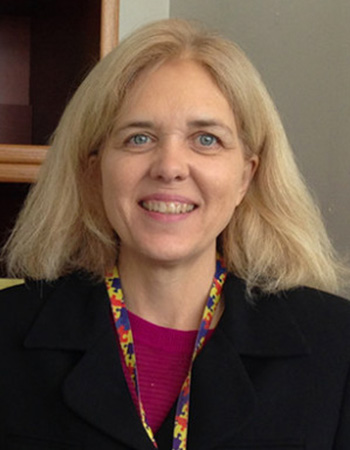
Modern medical training is undergoing rapid change. Consequently, innovative approaches must be developed to balance work hour restrictions, educational needs, and the provisions of high-quality care.
The Department of Pediatrics at Harbor-UCLA has instituted a robust hospitalist system to help meet the needs of patient care while allowing residents to concentrate on their education. The Department has a simulation center and an enhanced interactive learning web site. As an interactive teaching tool, our innovative web site complements more traditional education methods such as lectures, bedside instruction, and review courses. More changes are inevitable, however, the Department of Pediatrics at Harbor-UCLA will retain its focus on providing high-quality care to the disadvantaged in an environment that stresses the growth of independent thinking, collegiality, and academic excellence.
Residents in our program have access to a remarkably diverse patient population. Each trainee is encouraged to explore their interests and to enhance their training through additional experience in community activism, global health, research, or specific aspects of patient care. Our residents are well prepared for the next phase of their careers and we derive great satisfaction from their accomplishments in clinical practice, research, and public health.
Our History
History of Harbor-UCLA Medical Center
Prior to World War II, the South Bay was sparsely populated and a county hospital was not warranted. Individuals seeking health care in ‘20s and ‘30s traveled to San Pedro to a clinic operated by the City of Los Angeles or to downtown Los Angeles to General Hospital — currently known as LAC+USC. Due to the war, the character of the South Bay was permanently altered by defense projects. Five major shipyards, two large oil refineries, a synthetic rubber plant, and an aluminum plant were constructed in the once vast open space. People moved to the area to work in these factories and the population increased rapidly.
In 1943 the United States Army built the Los Angeles Port of Embarkation (LAPE) Hospital on the 78-acre site between Carson Street and 220th Street and Vermont Avenue and Normandie Avenue. The 77 pavilion-style Army barracks, known at the time as the “Station Hospital,” served as a military transfer hospital for casualties from the Pacific Theater of World War II. The “Station Hospital” also provided health care to servicemen and their families living in the area. The end of the war marked the beginning of the dramatic transformation that is Harbor-UCLA Medical Center as we know it today.
Soon after the war ended, the Army closed the LAPE Hospital. The last prescription for a patient was filled by the pharmacy in February, 1946. At this time, however, Torrance was one of the fastest growing cities in the country. Community organizations, physicians and private citizens lobbied the County Board of Supervisors to purchase the LAPE Hospital in order to operate it as a county hospital to serve the South Bay. Their efforts were successful and in June of 1946, the United States Army sold the entire facility as war surplus to the Los Angeles County Department of Charities for $48,271 – about five percent of its appraised value.
Harbor General Hospital opened one month later with 60 beds and 70 employees. The purchase of Harbor was an attempt to relieve a 3,000 acute care bed shortage county wide. While the hospital’s initial mission was to care for the indigent, Harbor General also fulfilled the emergency medical care needs of the county’s enormous postwar population.
In 1951, an affiliation between Harbor General Hospital and the newly founded UCLA School of Medicine was realized and Harbor General became a teaching hospital for the UCLA School of Medicine. The relationship between Harbor and UCLA predated the opening of the UCLA Medical Center on the Westwood campus by several years. Financed by a $15.4 million bond measure overwhelmingly passed by Los Angeles County voters, construction of a new acute care facility was begun in 1960 and completed in 1963. This new expanded facility was a 553-bed hospital. In 1978, the new Harbor General facility was renamed Harbor-UCLA Medical Center. In 1994, another major addition to the building was completed.
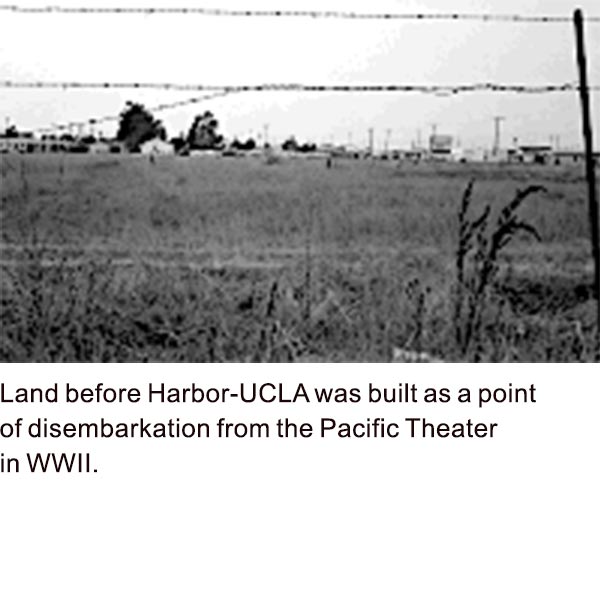
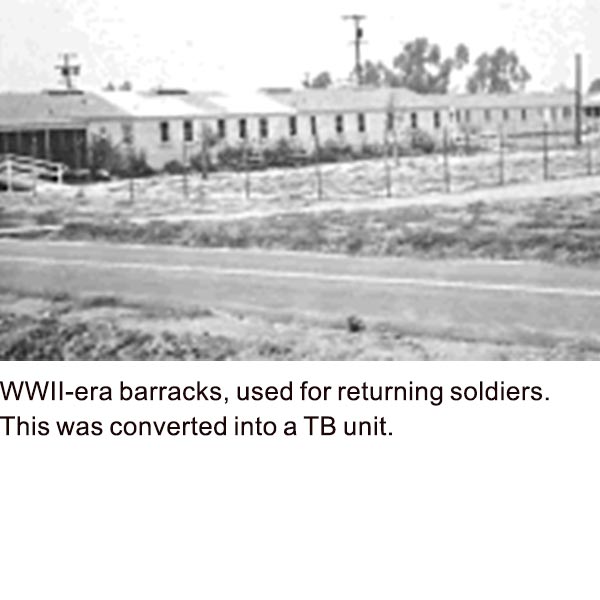
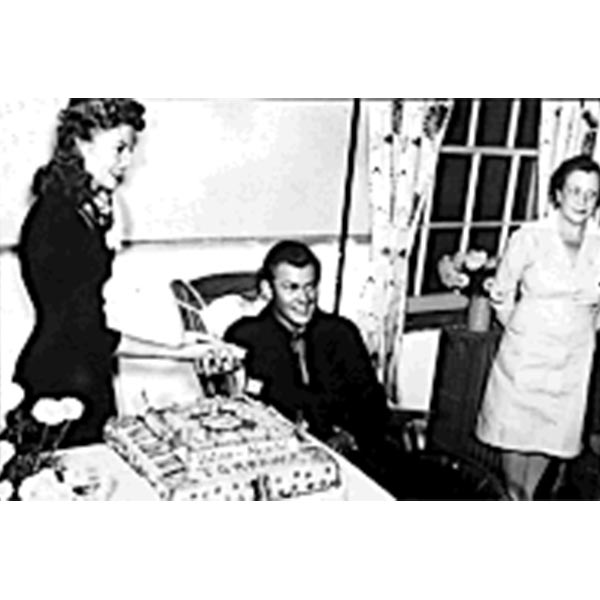
History of Harbor-UCLA Pediatrics
Due to the winning combination of innovative scientific research and superior clinical care, the Department of Pediatrics at Harbor-UCLA has an impressive record of many life altering achievements over the past four decades.
In the ‘70s Department of Pediatrics physicians pioneered diagnostic tests that remain the standard today. A testing and outreach program developed by Dr. Michael Kaback virtually eliminated new cases of Tay-Sachs disease in high-risk populations. Harbor-UCLA became the headquarters for both statewide and international Tay-Sachs screening programs.
Dr. Delbert Fisher was the first to comprehensively characterize the ontogenesis of fetal thyroid development. He went on to conceptualize and then develop a simple, highly effective newborn screening test for congenital hypothyroidism, including developing the micro assay methods that made it possible to screen on a national scale. This has resulted in the elimination of intellectual disability in children from this disease when identified and treated in the neonatal period.
In the ‘80s the department saw enormous growth and technological advances. The Perinatal Clinical Research Center was established, one of only eight such centers in the United States focused on research involving mothers and infants. The Footlighters Child Life Center was founded in 1986 as a facility purely dedicated to providing therapeutic play programs for ill and injured pediatric patients and their families. Physicians at Harbor-UCLA also developed the first sub-specialty education program in pediatric emergency medicine. During this decade, pediatrics investigators such as Dr. Alan H. Jobe also helped develop refined synthetic surfactants, saving the lives of thousands of premature babies.
Harbor pediatricians continued to pioneer treatments and technologies to improve children’s health in the ‘90s. Dr. Sherwin Isenberg developed an inexpensive treatment for eye diseases that has prevented blindness in thousands of children in underdeveloped nations. Lead by Dr. Emil Kakkis, Harbor investigators invented an enzyme replacement therapy to help young victims of a devastating genetic disorder, Hurler-Scheie syndrome. In the United States, Harbor researchers also played a key role in the development of innovative approaches to prenatal care which have virtually eliminated the maternal-fetal transmission of the virus which causes AIDS.
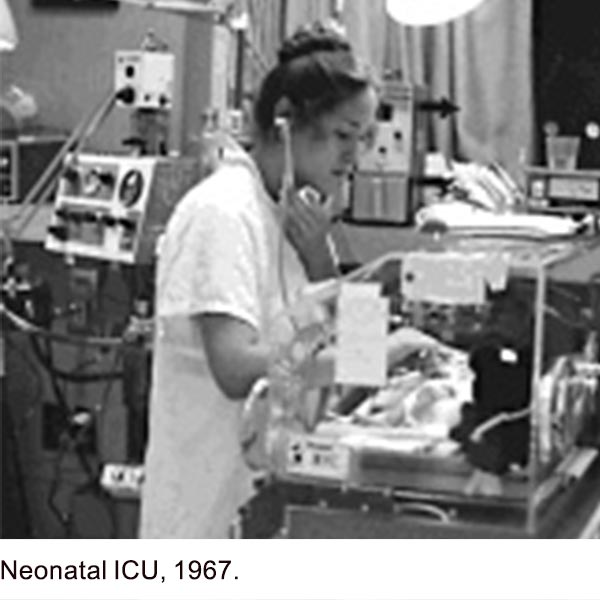
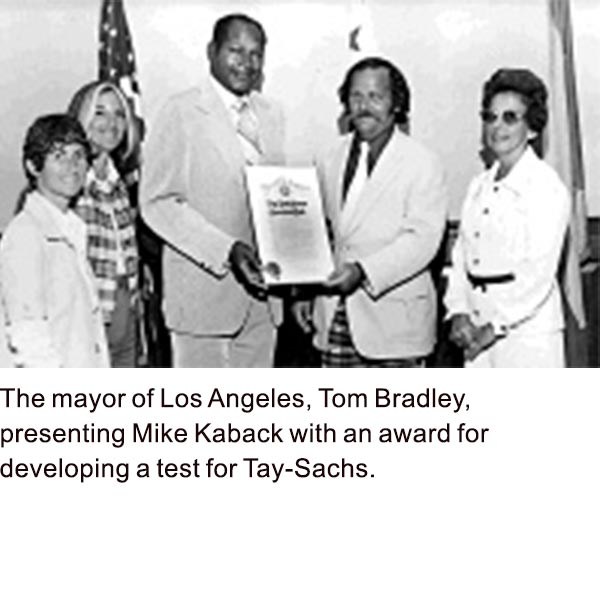
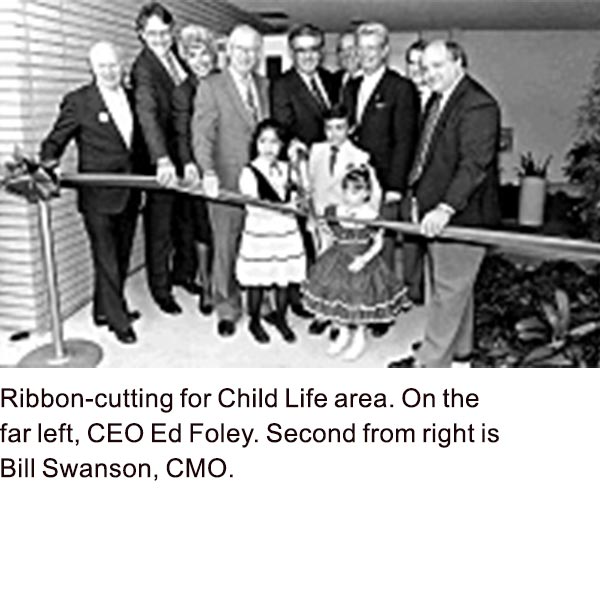
Overview of Harbor-UCLA Pediatrics Achievements
Dr. Delbert Fisher’s discovery of a highly sensitive antibody to thyroid stimulating hormone that gave rise to a newborn screening test for congenital hypothyroidism, a common cause of intellectual disability.
- Dr. Michael Kaback’s development of a test to detect carriers of Tay-Sachs disease, an inherited, fatal disorder
- Definitive studies of lung surfactant by Dr. Alan H. Jobe, saving the lives of thousands of premature infants who would have died due to immature lungs
- The development and clinical introduction of a povidone-iodine ophthalmic solution by Dr. Sherwin Isenberg to prevent neonatal infectious conjunctivitis and its resultant blindness
- Current faculty member Dr. Marianne Gausche-Hill was the first physician in the U.S. to complete a sub-specialty education program in pediatric emergency medicine, a program first developed at Harbor-UCLA
- Dr. Emil Kakkis’ development of an enzyme replacement therapy for mucopolysaccharidosis I or Hurler-Scheie syndrome
- Through the UCLA Center for Vaccine Research, contributions to the licensure of new vaccines and the establishment of new national recommendations for childhood immunizations, protecting millions of newborns, children and adults from meningitis, whooping cough and pneumonia
- Improved pain management in infants and children as a result of research by Deon Hall, RN and a team of pediatric ward nurses
- Dr. Dana Street’s reconstructive surgery on thalidomide babies, improving normal body functioning for infants with severe deformities
- Harbor-UCLA’s pediatric emergency medicine program is replicated in many county hospitals, making LA County the first region in the country to develop a network of hospitals certified in pediatric emergency care
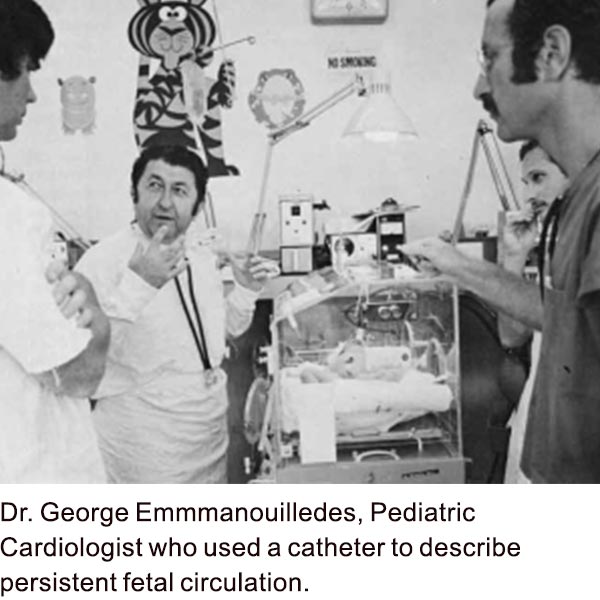
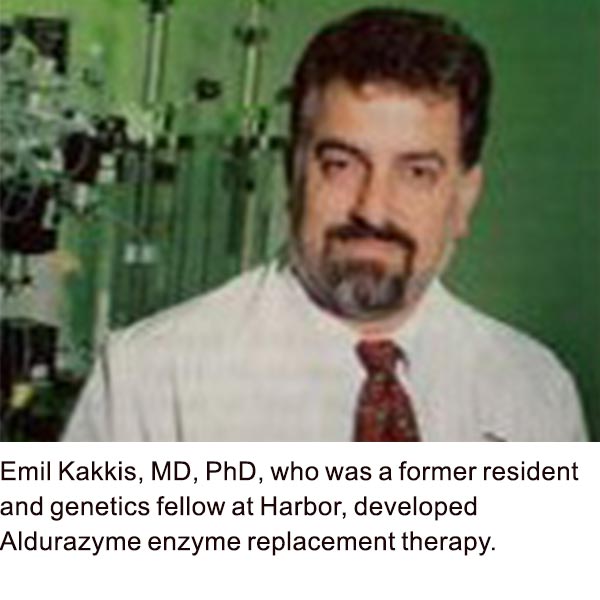
Harbor-UCLA Today
Despite difficult economic circumstances and an increasingly diverse and indigent patient population in Los Angeles County, Harbor-UCLA has continued to grow and prosper over the past four decades. Through its affiliation with UCLA, Harbor-UCLA has become an internationally known medical center, emphasizing a balance between its original patient care mission, academic medicine, research and education.
Today, Harbor-UCLA Medical Center is a Level 1 Trauma Center and an NIH-funded General Clinical Research Center that serves a catchment area of approximately 2 million citizens and offers a full spectrum of tertiary care in all medical and surgical specialties. In addition to a complex of buildings, original barracks and trailers, the 72-acre campus is comprised of an 8-story, 553-bed hospital and a 52,000 square foot Primary Care and Diagnostic Center. The total building space is roughly 1,000,000 square feet.
All of the approximately 300 full-time faculty, as well as some of the more than 450 part-time and voluntary professional staff hold faculty appointments at the UCLA School of Medicine. At Harbor, they dedicate their time to clinical care, research, and teaching. The nearly 450 residents and fellows training at Harbor also contribute to these endeavors. The hospital sponsors 34 Accreditation Councils for Graduate Medical Education accredited residency and fellowship programs in addition to other graduate medical training programs. The hospital also serves as a major training site for medical students from the David Geffen School of Medicine at UCLA and the Charles R. Drew University of Medicine and Science.
Harbor-UCLA Medical Center is a testament to the cooperation between local government and medical academia to provide high-quality, cost-effective medical care in concert with medical education and research. Harbor-UCLA exemplifies a model for facing the ever-increasing challenges of health care delivery to the medically disenfranchised of the United States.
*Sources: Harbor-UCLA Medical Center; Los Angeles Biomedical Research Institute
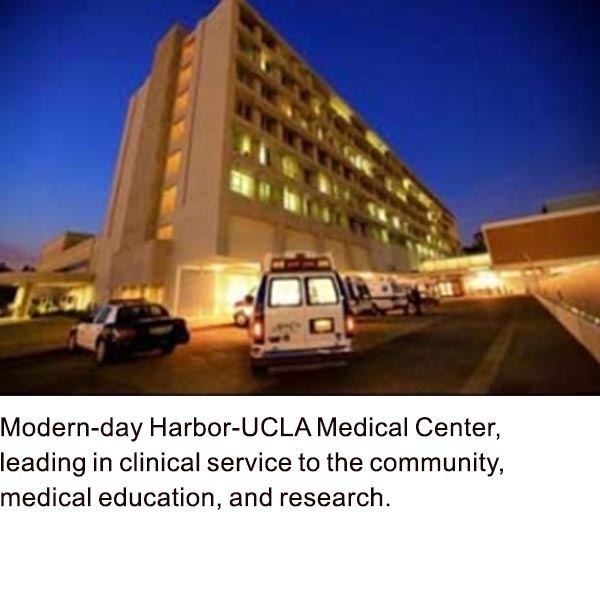
Giving
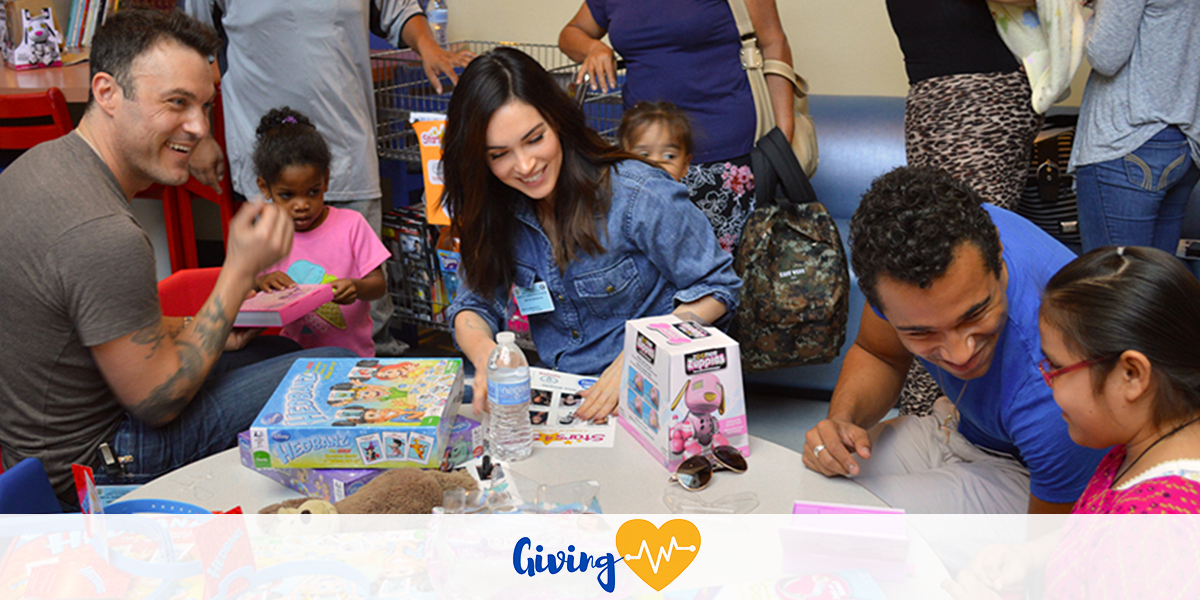
As a registered nonprofit and Los Angeles County hospital, Harbor Pediatrics depends greatly upon the generous contributions of donors. The financial support of our benefactors goes directly to our programs to provide better care for our pediatric patients.
To make a donation to Harbor-UCLA Pediatrics, contact:
Maria T. Equihua
Department of Pediatrics
(424) 306-5601
maequihua@dhs.lacounty.gov
Harbor-UCLA Medical Center
1000 West Carson Street
Hospital 6th Floor, Box 17
Torrance, CA 90509
Main Phone (424) 306-5600
Main Fax (310) 328-0864
Harbor-UCLA Pediatrics Location and Directions
1000 West Carson Street
Hospital 6th Floor, Box 17
Torrance, CA 90509
maequihua@dhs.lacounty.gov
HarborPedsResidency@dhs.lacounty.gov
Campus Map & Parking
As there is currently a lot of construction in progress on campus, please plan your visit accordingly. For applicants and visitors, we suggest that you park in the lot on 220th street. The hospital entrances are marked by arrows on this PDF of the campus.
An Ideal Southern California Location…
Harbor-UCLA Medical Center is situated near the San Diego (405) and Harbor (110) freeways. San Diego is a two-hour drive south, and downtown Los Angeles is a half-hour drive north. Beaches are 15 minutes from the hospital. Ski resorts are less than three hours away. San Francisco, Santa Barbara and Monterey-Carmel are close enough for weekend excursions. Ensenada and other Mexican resort towns along the Baja coast are other weekend destinations.
Most Harbor-UCLA residents choose to live in one of the beach cities close to the hospital. These include the City of Torrance, Redondo Beach, Hermosa Beach, Manhattan Beach, or San Pedro. These communities have many rental houses and apartments in communities that offer outdoor beach sports, theatres, music, restaurants and nightclubs.
Art, Culture, Music, Sports, Education…This is the place!
Los Angeles and Orange County are home to many major professional baseball, basketball, soccer and hockey teams such as the Lakers and the Dodgers. UCLA and USC offer exciting university sports activities. In addition, there are more than 20 universities and colleges in metropolitan Los Angeles. The UCLA Westwood campus and adjacent neighborhoods are favorites for those who enjoy exceptional restaurants, cinema and theatre.
Some of the finest museums on the West Coast are in the greater Los Angeles area. Within an hour you can visit The Los Angeles County Museum of Art, The Getty, the Norton Simon Museum, The Huntington Library and Botanical Gardens, the Museum of Contemporary Art, and the Redcat Theater at Disney Concert Hall. The Music Center in Los Angeles is a major complex of theatres including the Walt Disney Concert Hall and the Dorothy Chandler Pavilion, offering impressive theatre, opera, symphony and ballet performances.
It’s no secret that Los Angeles is a Mecca for world-class performing arts. The Center Theatre Group offers some of the finest theater on the West Coast – this includes the Ahmanson Theatre, The Mark Taper Forum, and the Kirk Douglas Theatre. At UCLA, the Geffen Playhouse and UCLA Live are critically acclaimed venues for music, dance, and theatre performances. The Greek Theatre and Hollywood Bowl are two of the most historic Hollywood music venues, famous for their outdoor cultural performances, featuring the L.A. Philharmonic Orchestra and world-class entertainers. LA Live is an amazing new entertainment complex in downtown Los Angeles, featuring the Nokia Theatre, the Staples Center, Club Nokia and many other attractions.
There are too many film festivals and historic movie theatres to list as Hollywood is a stone’s throw away. The AFI Film Festival and the Los Angeles Film Festival draw cinephiles from around the world every year. The American Cinematheque at the Egyptian Theatre, the Grauman’s Chinese Theatre, Disney’s El Capitan Theatre, and the Kodak Theatre (home to the Oscars) are just a few of Hollywood’s legendary movie theatres.

